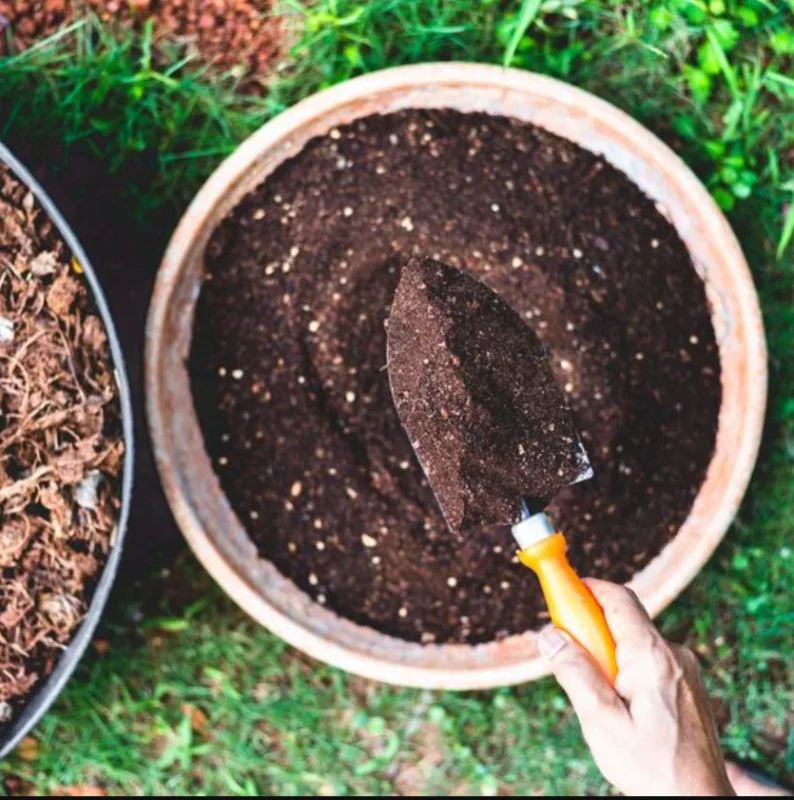Embracing the essence of sustainability, compost tea is a liquid gold elixir for your garden, infusing soil and plants with beneficial microorganisms that enhance growth and vitality.
In this guide, we delve into creating your own compost tea brewer and concocting the most nutritious tea for your plants.


Part 1: Crafting Your Compost Tea Brewer
To begin, you’ll construct a simple yet effective compost tea maker using everyday items. Here’s what you’ll need:
A sturdy 5-gallon bucket
An aquarium pump powerful enough for the size of your bucket
Approximately 4 feet of plastic tubing
An air stone
A nylon stocking
Quality compost
Instructions:
- Place your air stone at the bottom of the bucket. This little device is crucial as it diffuses air into the water, creating an oxygen-rich environment necessary for aerobic bacteria to thrive.
Connect one end of the plastic tubing to the air stone and the other end to the aquarium pump. Ensure there are no kinks in the tubing to allow for smooth airflow.
Fill the bucket with clean, dechlorinated water. If you’re using tap water, let it sit for 24 hours to allow any chlorine to dissipate, as chlorine can harm the beneficial bacteria you’re aiming to cultivate.
Add your compost to the nylon stocking to create a “tea bag,” and then immerse it in the water. The stocking acts as a filter, preventing compost particles from dispersing into the water while allowing the microbial life to seep out.
Secure the aquarium pump to the side of the bucket, ensuring it is above water level to prevent any siphoning mishaps.
Turn on the pump and let your brewer work its magic. You should see a plethora of bubbles surfacing, indicating that the air stone is properly oxygenating your compost tea.
Part 2: Brewing the Best Compost Tea
With your DIY compost tea maker ready, it’s time to brew the tea. Follow these steps to create a potent batch of compost tea:
- Ratio: Aim for a compost to water ratio of about 1:5. For a 5-gallon bucket, this means using approximately 1 gallon of compost.
Brew Time: The brewing process typically takes between 24 to 36 hours. Brewing beyond 36 hours can result in an anaerobic environment, which could harm your plants.
Aeration: Keep the air pump running continuously to supply ample oxygen. This encourages the growth of beneficial aerobic microbes.
Stirring: Occasionally stir the compost bag to ensure even exposure to the water and prevent any anaerobic pockets from forming.
Additives: To boost the microbial activity, you can add unsulfured molasses at a rate of 1-2 tablespoons per gallon of water at the start of the brewing process.
Usage: After brewing, apply the compost tea to your plants as soon as possible for the best results. Dilute the tea with water if it’s too strong, aiming for a light brown color, similar to weak tea.
Application: You can use compost tea as a foliar spray or soil drench. For foliar applications, strain the tea to remove any particles that could clog the sprayer, and apply in the early morning or late afternoon to avoid leaf burn.
Frequency: Feed your plants with compost tea every 2-4 weeks during the growing season for optimal health.


By following these meticulous steps, you’re not only recycling nutrients but also fostering a microecosystem that will naturally bolster your garden’s resilience and productivity. Cheers to the alchemy of compost tea!
News
Strictly judge Shirley Ballas’ terror as man charged with stalking her for more than six years
STRICTLY judge Shirley Ballas suffered “persistent serious alarm or distress” during a six-year stalking ordeal, a court has heard. Kyle Shaw, 37, was accused of sending messages to 64-year-old Shirley from 2017 to 2023. Strictly judge Shirley Ballas was allegedly stalked…
Denise Welch of Loose Women sparked rumors of a split from her husband of 14 years by revealing he cannot change something she deeply despises.
Loose Women’s Denise Welch has shared an important health update with her fans after experiencing what she described as a series of “bumpy weeks.” The popular television presenter and actress, known for her candid discussions about mental health, took to…
SHOCKING: Kate Garraway was exposed for purchasing “luxury items” after declaring herself “broke” on live TV, sparking viewer outrage.
Kate Garraway, the beloved *Good Morning Britain* presenter, has been a familiar face on UK television for years. With her warm demeanor and ability to connect with audiences, she has earned the affection of many. However, behind the scenes, Kate has faced…
Strictly’s Amy Dowden voiced concerns about her participation in the 2025 tour after sharing updates on her worsening health via social media.
Amy Dowden, the talented and beloved professional dancer from BBC’s *Strictly Come Dancing*, recently opened up about her emotional journey over the past year in a heartfelt New Year message to her fans. Sharing her thoughts on social media, Amy…
Denise Welch, a Loose Women panelist, sparked speculation about a potential split from her husband of 14 years, citing his inability to change something she despises.
Loose Women’s Denise Welch has shared an important health update with her fans after experiencing what she described as a series of “bumpy weeks.” The popular television presenter and actress, known for her candid discussions about mental health, took to…
Denise Welch ignited speculation about a possible breakup after mentioning her husband of 14 years’ failure to change something she dislikes.
Loose Women’s Denise Welch has shared an important health update with her fans after experiencing what she described as a series of “bumpy weeks.” The popular television presenter and actress, known for her candid discussions about mental health, took to social media…
End of content
No more pages to load











